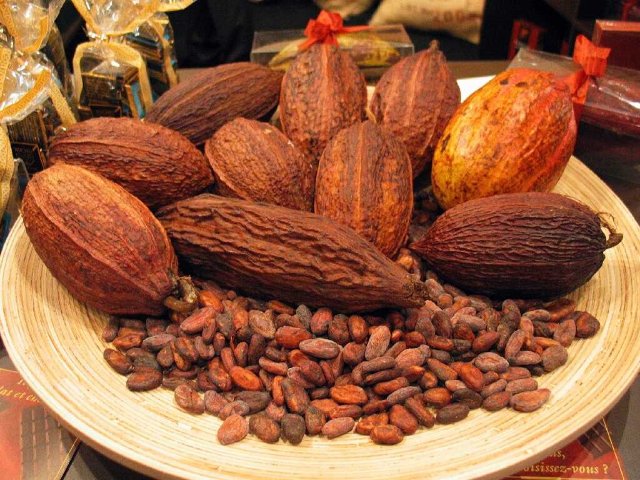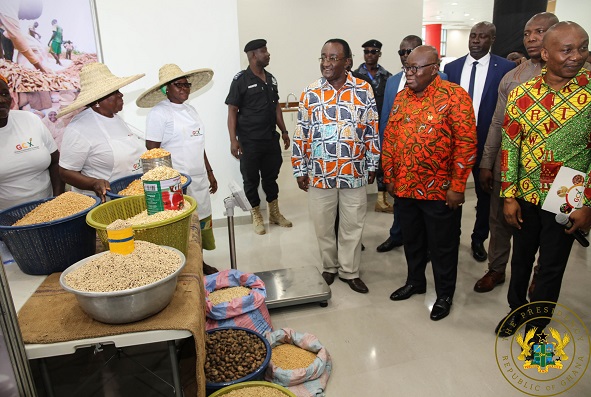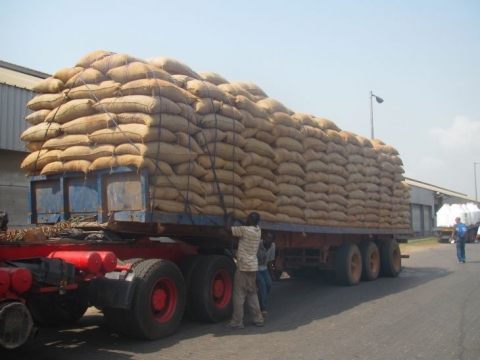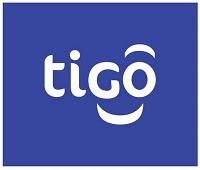Ghana, Ivory Coast Agree To Work Together To Tackle Cocoa Price Volatility

Ghana and Ivory Coast are the largest producers of cocoa in the world, accounting for more than 60 percent of the global share, but cocoa price volatility has been unfavourable to the two West African neighbours.
In the 2015/2016 production year, Ivory Coast produced a total of 1.7 million metric tonnes of cocoa and Ghana produced some 840,000 tonnes. Ghana is targeting one million metric tonnes for the 2016/2017 production year.
Cocoa prices have been at a 10-year low and that is expected to put pressure on the economies of the two countries, according to the rating agency, Moody’s.
Current average cocoa prices reflect a drop of around 30 per cent compared to mid-2016.
But on Wednesday April 12, 2017, the two countries agreed to do something about cocoa price volatility. During the Cocoa and Coffee Council meeting in Abidjan, they agreed to deepen collaboration and coordinate their production strategies in order to tackle price volatility.
Massandje Toure-Litse of the Coffee and Cocoa Council of Ivory Coast reportedly told journalists in Abidjan; “It’s become imperative that our countries take decisions on points concerning production and sustainability and on points concerning the prickly question of the volatility of prices.”
Joseph Boahen Aidoo, the CEO of Ghana’s COCOBOD, signed on behalf of Ghana with Toure-Litse signing for Ivory Coast.
Ironically, while Africa produces about 75 per cent of the world’s cocoa, only 20 per cent of the grinding process takes place in Africa, and of the annual $100 billion value of the world’s chocolate industry, only two per cent comes to Africa.
Meanwhile, about 85 per cent of the cocoa feeding the multi-billion euro chocolate industry in The Netherlands comes from African countries, with Ghana and Ivory Coast being the largest producers.
In 2015, The Netherlands exported €2.8 billion worth of chocolate, semi-finished and cocoa butter products.
Source: myjoyonline.com
Ghana and Ivory Coast are the largest producers of cocoa in the world, accounting for more than 60 percent of the global share, but cocoa price volatility has been unfavourable to the two West African neighbours.
In the 2015/2016 production year, Ivory Coast produced a total of 1.7 million metric tonnes of cocoa and Ghana produced some 840,000 tonnes. Ghana is targeting one million metric tonnes for the 2016/2017 production year.
Cocoa prices have been at a 10-year low and that is expected to put pressure on the economies of the two countries, according to the rating agency, Moody’s.
Current average cocoa prices reflect a drop of around 30 per cent compared to mid-2016.
But on Wednesday April 12, 2017, the two countries agreed to do something about cocoa price volatility. During the Cocoa and Coffee Council meeting in Abidjan, they agreed to deepen collaboration and coordinate their production strategies in order to tackle price volatility.
Massandje Toure-Litse of the Coffee and Cocoa Council of Ivory Coast reportedly told journalists in Abidjan; “It’s become imperative that our countries take decisions on points concerning production and sustainability and on points concerning the prickly question of the volatility of prices.”
Joseph Boahen Aidoo, the CEO of Ghana’s COCOBOD, signed on behalf of Ghana with Toure-Litse signing for Ivory Coast.
Ironically, while Africa produces about 75 per cent of the world’s cocoa, only 20 per cent of the grinding process takes place in Africa, and of the annual $100 billion value of the world’s chocolate industry, only two per cent comes to Africa.
Meanwhile, about 85 per cent of the cocoa feeding the multi-billion euro chocolate industry in The Netherlands comes from African countries, with Ghana and Ivory Coast being the largest producers.
In 2015, The Netherlands exported €2.8 billion worth of chocolate, semi-finished and cocoa butter products.
Source: myjoyonline.com





